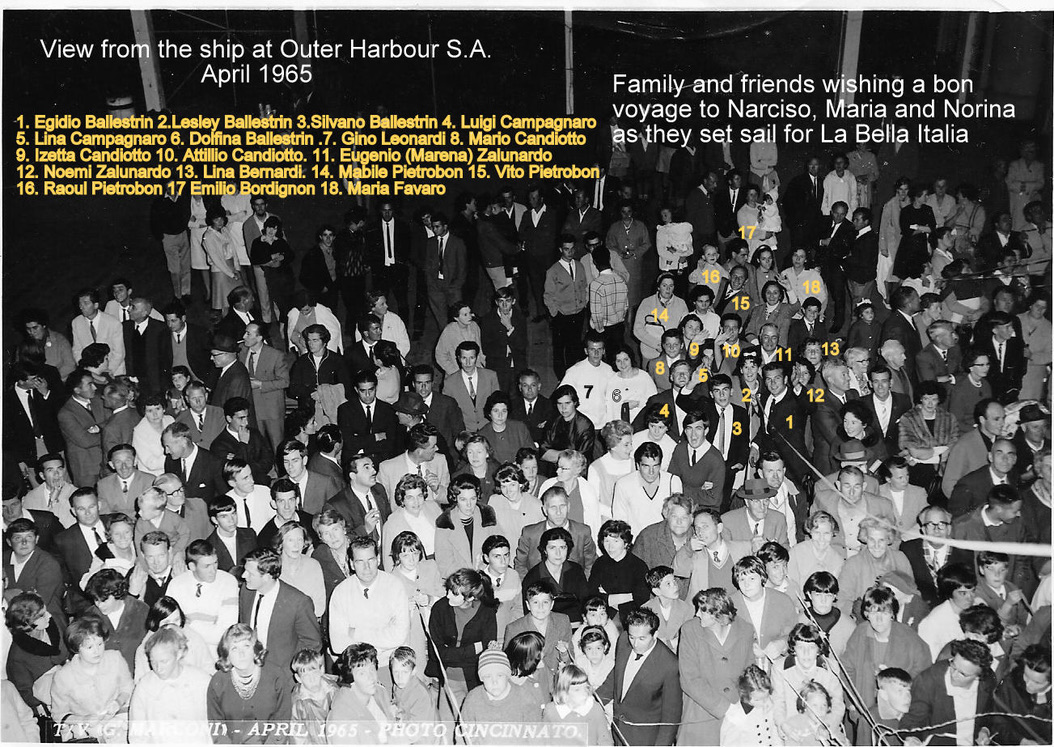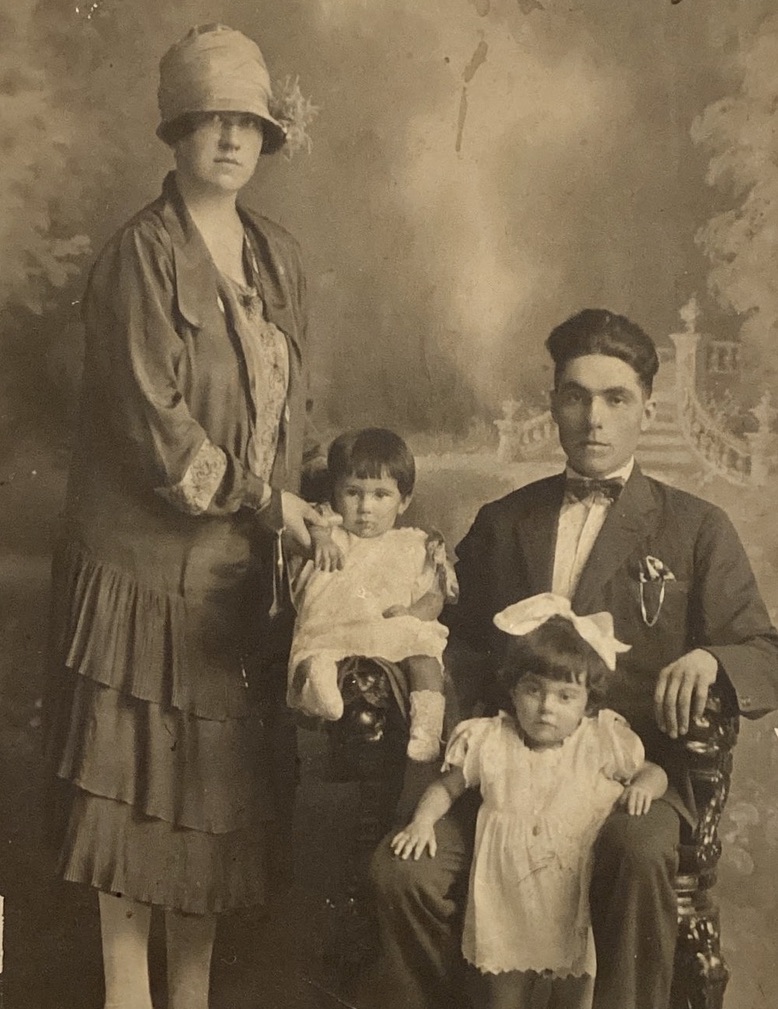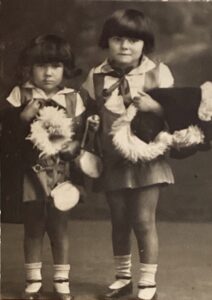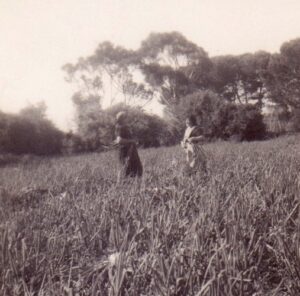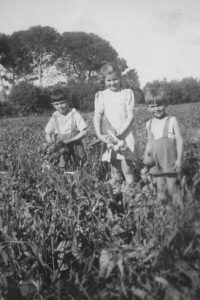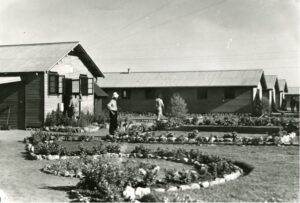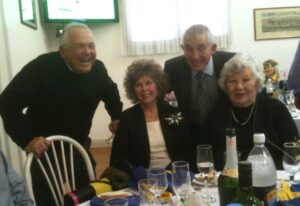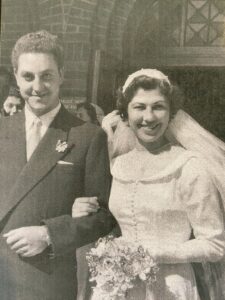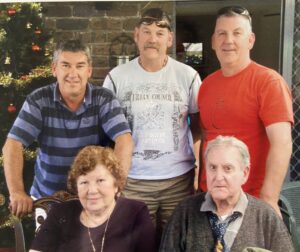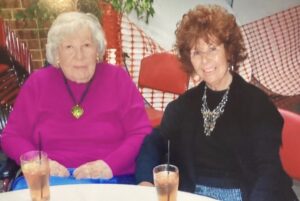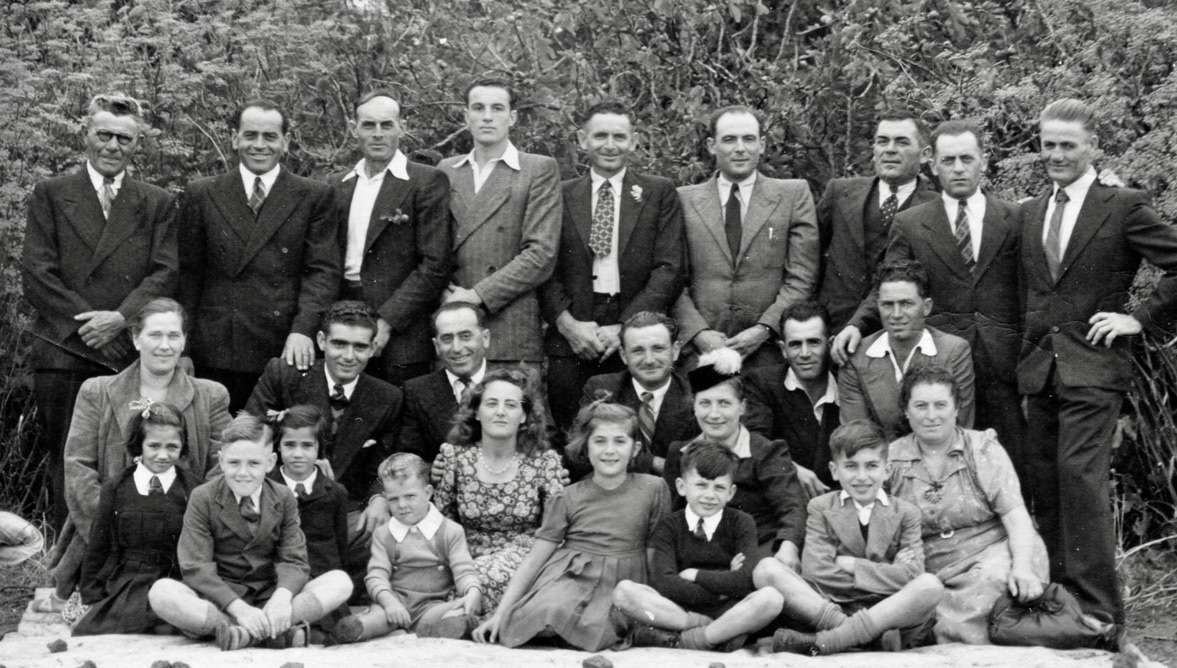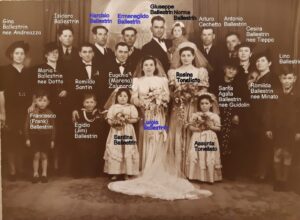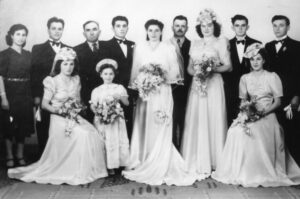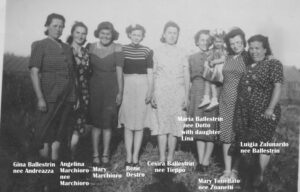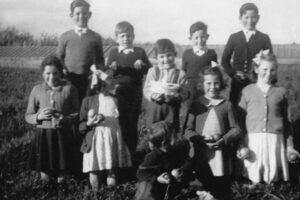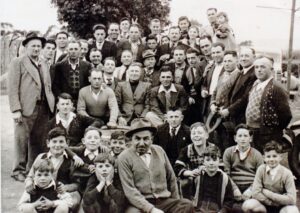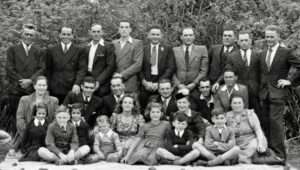In this part of the ‘Lives in photos’ series , the focus is on the visual records kept by families of their return visits to Italy.
In interviews, many second-generation narrators spoke about the first visits to Italy that their parents made in the 1960s. By that time, the market gardens were well established and families were prosperous enough to travel to Italy and stay for an extended length of time. Some who were children when they accompanied their parents recall the wonderful family reunions in the village. Others who went as adults emphasise the similarities of relatives whom they had not met previously because migration had separated families. The majority of the people I interveiwed for the project had visited Italy at least once. The photos document the experience of being enfolded in multi-generational families in the Veneto region.
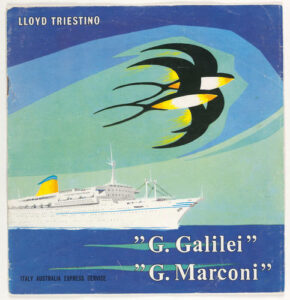
Farewell Adelaide
A number of families provided photos of the ship leaving Adelaide. The scenes of the ships pulling away from the dock at Outer Harbour are like images from films. Sometimes a studio took photos as a keepsake for families. In the feature photo, the large crowd was photographed by a studio and Silvano Ballestrin has identified the group who gathered at Outer Harbour to farewell his parents and sister in April 1965. Lloyd Triestino owned the ‘G. Marconi’ and ‘G. Galilei’ ships and advertised voyages to Italy knowing that many families wished to visit their families in Italy in the 1960s.
Groups of families make the visit together
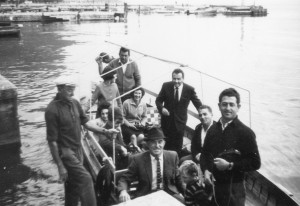
In 1964, a group of families from the Lockleys market gardener community made the voyage to Italy. They stayed with their respective relatives and also travelled as tourists in Italy and in other countries. The group included the Innocente, Tonellato, Valentini families. The Marin family also went at that time. The following photo shows some of the group sightseeing on Lake Como.
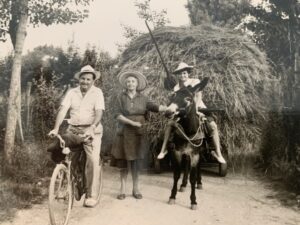
Aida Innocente recalls the time spent with her grandmother and relatives in Caselle di Altivole and the tasks that were part of the family household on their land. She happily took part in activities and made life-long friends with children whose families were neighbours to her nonna.
Making the links – Australia and Italy
Romildo and Clara Santin and their two older children, Diana and Allan, made the trip to Italy in 1962. Second daughter, Lisa was born i 1969. On that first family trip, Diana was 11 years old and remembers many details of the visit. She recalls that her father had a reel-to-reel tape recorder and prior to leaving Adelaide, he had gone to families and invited them to record a message to their relatives in the Veneto region. This was an opportunity especially for elderly relatives to hear the voices of their children and grandchildren. On the way to Italy, Romildo bought a Super8 movie camera so he could record messages, events and images of daily life in the province of Treviso and show them to the families in Adelaide. Here’s what Diana remembers:
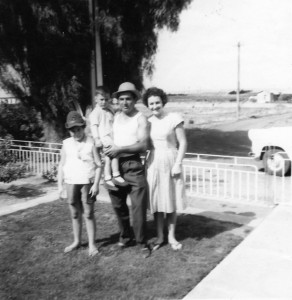
I remember – Dad going over on the ship, bought a movie camera and – he went around to every family who had children here, you know, all their parents and took photos of every family. And when he came back here, he showed them. Yes. we’ve got it, we’ve got everything … we travelled and found all these people … (Diana Panazzolo nee Santin, OH 872/ 18 October 2013)
Romildo was using the technology of the time to record the voices and then images of people. He was able to assist families to keep connections at a time when phone calls were expensive.
Observing a parent’s first visit to Italy
In 1969 Frankie Ballestrin accompanied his mother, Maria, on her return to Valla’ for the first time after 34 years. He recalls the moment of arrival at the airport:
Well, Mum hadn’t see her younger sister – she was only seven or eight when she left – and when she met her at the airport, it was a sight to behold … my auntie jumped the barrier … (Frankie Ballestrin, OH 872/7, 14 January 2009)
Meeting parents-in-law for the first time
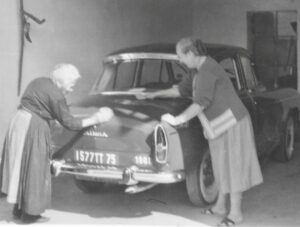
Amelia Zampin nee Shaw had married Silvano Zampin in 1931 after he had been in Adelaide for three years. Amelia was from an Irish Australian family and it was unusual for a young girl to marry an Italian at that time. Amelia and Silvano had nine children and in 1961 they made their first of three visits to Italy and they were away for about six months. Their seventh daughter, Sandra, worked the market garden during that time. The daughters interviewed for the project all reflect on the particular importance of that first visit because their mother met her parents-in-law and found out more of Silvano’s family background and village life.
The photos of the return visits and first visits to Italy record family reunions, events and daily life in the villages and households. The first generation and the 1.5 generation who had left as children reconnected with family members and the second generation who were born in Australia came to understand their grandparents, aunts, uncles and cousins and their heritage. The photos are permanent ways to recall transnational connections in families.
Madeleine Regan
6 February 2022
